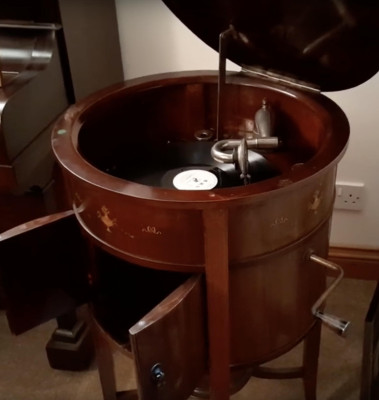News
1920's Tyrela gramophone - powered by steel
30 August 2023

Gramophone from the 1920s
This gramophone is made in the early 1920s, out of mahogany wood. It is hand wound (to store energy in a steel spring) and uses 78 r.p.m. records. The volume of the output can be controlled by opening and closing the doors.
The steel-needle translates the topology of the grooves on the record, into vibrations that feed the the horn from which the sound can be heard.
Some microscopes work by scanning a needle extremely close to the surface of a sample, giving almost atomic resolution of the surface topology. The force between the needle and surface provides feedback to a piezoelectric crystal that actuates to maintain a very small, constant distance from the surface.
| People: | Harry BHADESHIA |
Updated by: Harry Bhadeshia

